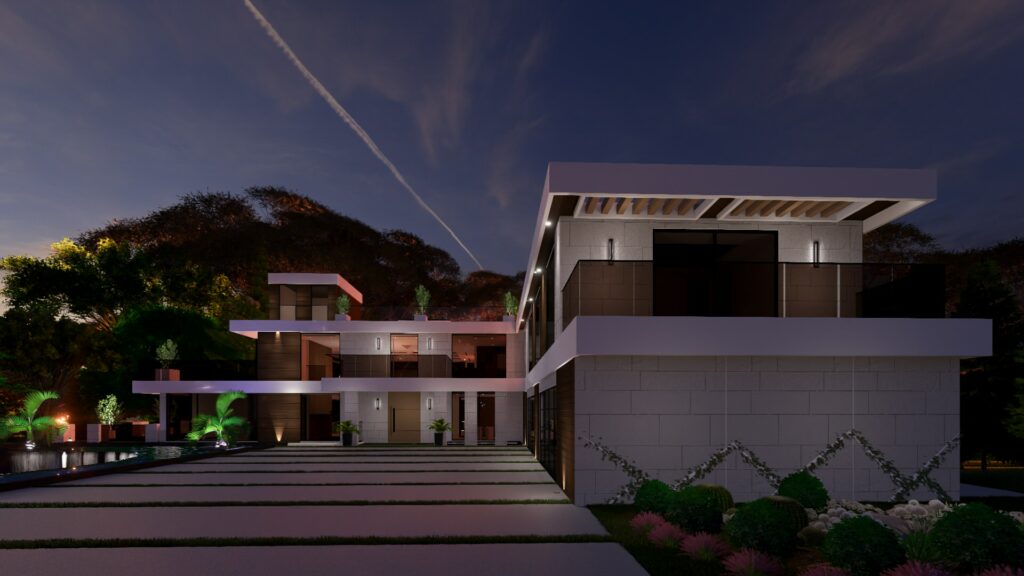
Save Thousands on Your New Home by Simplifying Its Shape
When building a new home, it’s easy to get swept up in the allure of luxurious finishes like premium floor coverings, exquisite bench-tops, high-end tap-ware, and designer lighting. These inclusions certainly add elegance and character to your home, but they can also significantly increase your budget. However, there’s a lesser-known design principle that can save you tens of thousands of dollars without sacrificing style or sophistication. It all comes down to one simple yet impactful factor: the shape of your house.
Why Shape Matters More Than You Think
The external shape of your house is one of the most fundamental factors influencing its construction cost. While complex designs might appear more sophisticated or exclusive, they often come with a hefty price tag—not because they’re harder to build, but because they require more materials.
Consider this: A home with multiple angles, curves, or projections tends to have a greater wall surface area. This directly impacts the volume of materials required, including bricks or cladding, framework, insulation, and interior finishes like gyprock and cornices. Additionally, complex shapes increase the need for longer lengths of guttering, eaves, and roofing materials.
On the other hand, a simpler design—like a rectangle or square—maintains the same internal floor area while minimizing wall surface area. This results in significant material savings, potentially amounting to tens of thousands of dollars.
The Hidden Costs of Complexity
Let’s break down how a more intricate house shape can drive up your costs:
- Increased Wall Surface Area: More angles and corners mean more walls, which means more bricks, insulation, and finishes. This also increases labor costs, as each corner and angle takes longer to construct.
- Higher Roofing Costs: A complex roofline with multiple peaks, valleys, and projections requires additional framing, flashing, and roofing materials. This can also lead to higher maintenance costs in the future.
- Extended Guttering and Eaves: With a more intricate shape, you’ll need longer guttering and eaves to cover the additional perimeter. This can quickly add to your expenses.
- Foundation Complexity: Irregular house shapes often require more extensive foundations, which can increase excavation, formwork, and concrete costs.
- Heating and Cooling Efficiency: A simpler, more compact shape is generally easier and more cost-effective to heat and cool. Complex shapes often have more external surfaces exposed to the elements, leading to higher energy costs.
Achieving Elegance Through Simplicity
Simplifying your house’s shape doesn’t mean compromising on style or functionality. Here are some ways to retain elegance and sophistication while keeping costs in check:
- Opt for Rectangular or Square Footprints: These shapes are not only cost-efficient but also versatile. With creative interior design, they can feel just as luxurious as more complex layouts.
- Incorporate Smart Design Features: Use strategic window placements, high ceilings, and open-plan living spaces to create a sense of grandeur and openness.
- Focus on Facade Treatments: A simple shape doesn’t have to look plain. Consider stylish facade treatments like contrasting materials, bold color schemes, or striking entryways to add visual interest.
- Choose Functional Projections: If your design requires projections, limit them to functional spaces like porches, verandas, or alfresco areas. These can enhance your home’s aesthetic and usability without adding unnecessary costs.
- Work with Your Builder: Collaborate with your builder to explore ways to achieve your desired look within a simpler external shape. Builders often have valuable insights into cost-effective solutions.
The Long-Term Benefits
Choosing a simpler house shape not only saves you money upfront but also offers long-term advantages. With fewer materials and less complex construction, your home will likely require less maintenance over time. Additionally, compact shapes tend to be more energy-efficient, reducing your utility bills and environmental impact.
Final Thoughts
Before you fall in love with a complex architectural design, take a step back and consider the shape of your house. By opting for a simpler external design, you can achieve significant cost savings while still building a stylish, functional, and beautiful home. Consult with your builder to find ways to simplify your design without compromising your vision.
Remember, a well-designed rectangle or square can be just as stunning—and far more economical—as any elaborate architectural masterpiece. By focusing on smart design choices, you can create a dream home that’s both budget-friendly and sophisticated. The shape of your house truly matters more than you think!